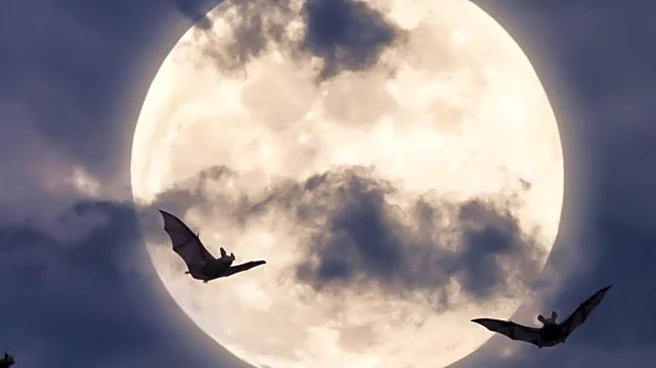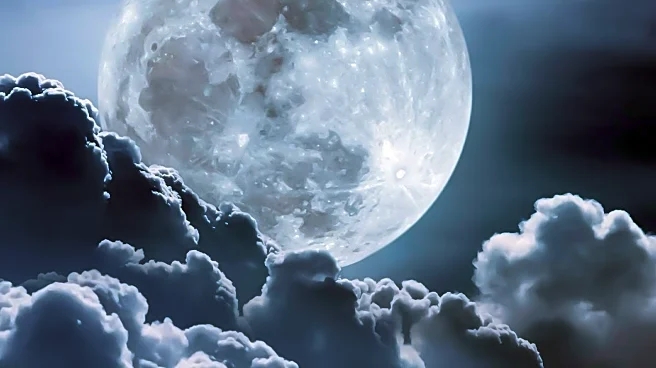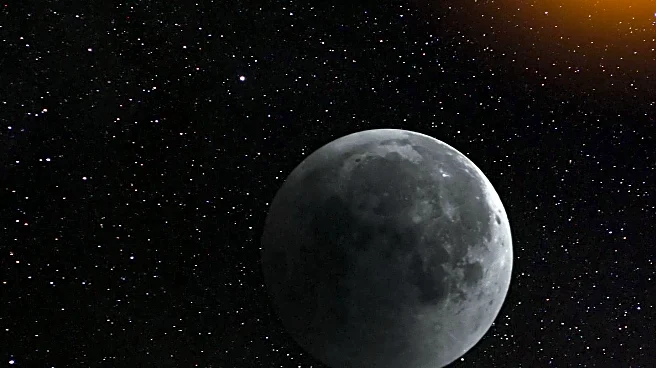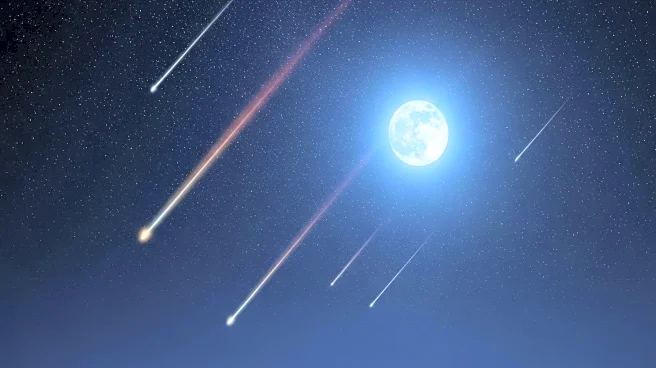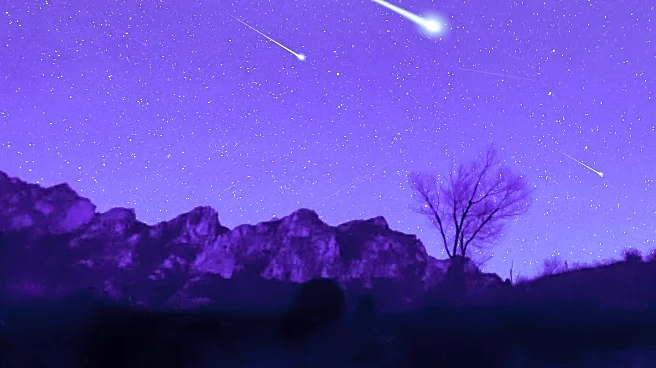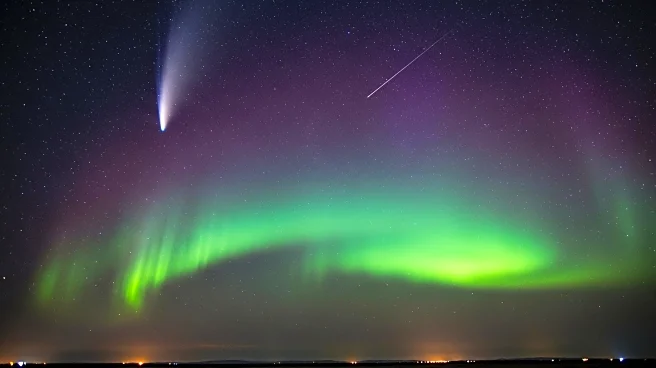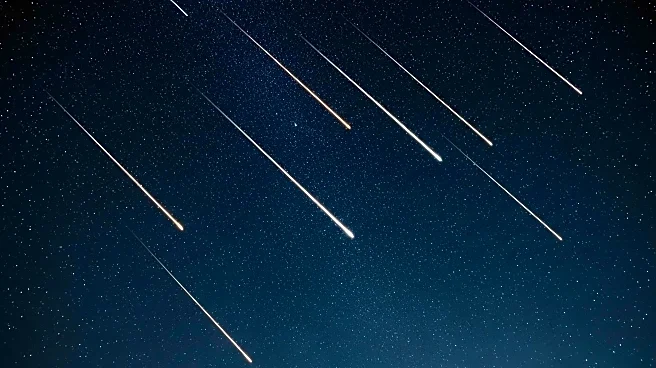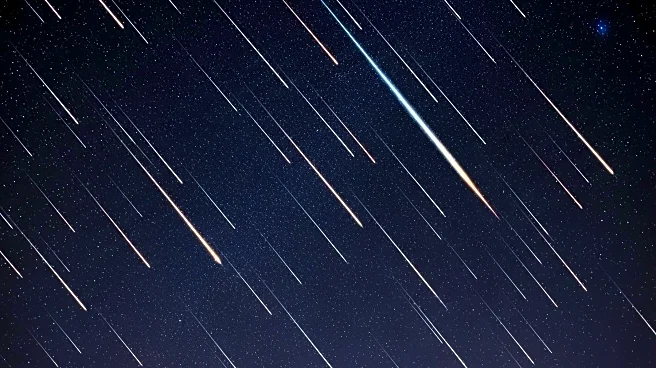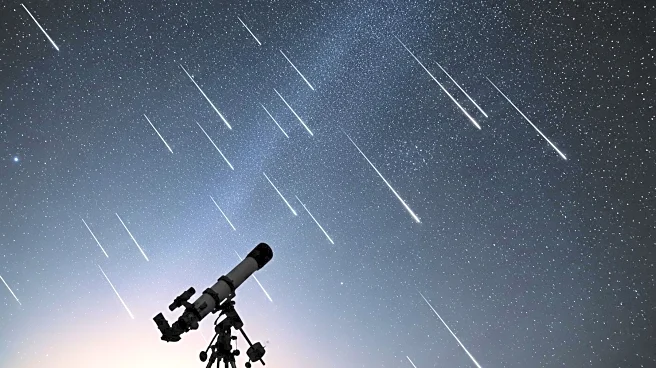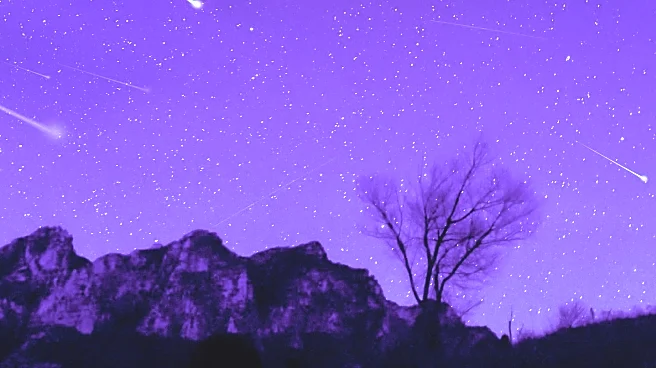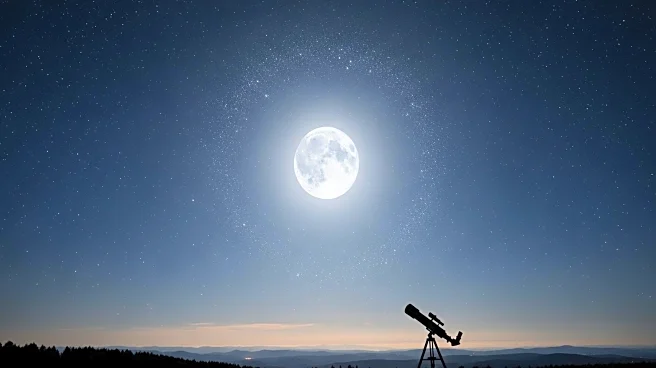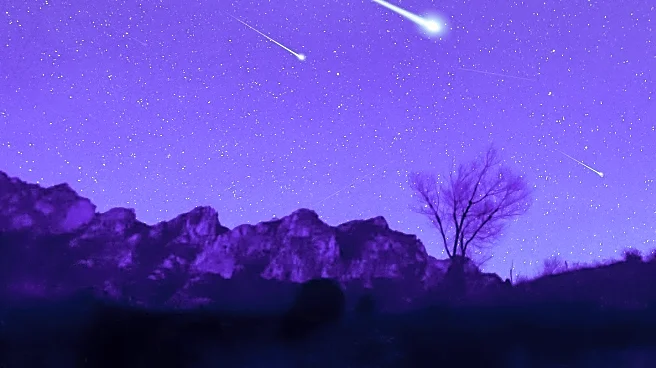What is the story about?
What's Happening?
The Harvest Supermoon is set to light up the night sky on October 6-7, 2025, marking the first full moon after the autumn equinox. This event is notable for its brightness and size, as the moon will be approximately 10-16% closer to Earth than usual, making it appear 30% brighter and up to 14% larger in diameter. The Harvest Moon traditionally aids farmers in gathering crops late into the night due to its bright moonlight. This year, the Harvest Moon falls in October, a rare occurrence, as it is closest to the equinox. Observers can expect the moon to appear orange-gold as it rises above the horizon, with Saturn visible nearby, enhancing the celestial display.
Why It's Important?
The Harvest Supermoon offers a unique opportunity for skywatchers and photographers to capture stunning lunar and celestial images. Its occurrence in October is rare, adding to the excitement for astronomy enthusiasts. The event also coincides with two meteor showers, the Draconids and Orionids, providing additional skywatching opportunities. The bright moonlight may overshadow the Draconids, but the Orionids, peaking under a new moon, promise a better viewing experience. This convergence of celestial events highlights the beauty and complexity of the night sky, encouraging public interest in astronomy and space exploration.
What's Next?
Skywatchers are advised to find a clear eastern horizon to view the Harvest Supermoon at sunset on October 6. The moon will rise at roughly the same time for several nights due to its proximity to the equinox. Binoculars or telescopes can enhance the viewing experience, revealing details of the lunar surface. The Draconid meteor shower peaks on October 8, while the Orionid shower peaks on October 21, offering more opportunities for observing shooting stars. These events are part of a series of celestial highlights throughout October, including World Space Week and International Observe the Moon Night.
Beyond the Headlines
The Harvest Supermoon and accompanying meteor showers provide a chance to reflect on the cultural and scientific significance of lunar events. Historically, the Harvest Moon has been crucial for agricultural practices, allowing extended work hours under its light. Today, it serves as a reminder of the interconnectedness of natural phenomena and human activities. The event also underscores the importance of preserving dark skies for astronomical observations, as light pollution can hinder the ability to fully appreciate such celestial displays.
AI Generated Content
Do you find this article useful?
